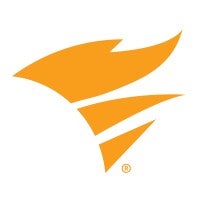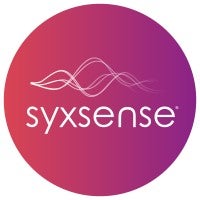Servers are complicated machines, requiring cool rooms and regular updates and maintenance to run properly. The problem is, many IT departments are understaffed, and adding server management on top of IT’s already full workload can be overwhelming. Server management software can help lessen the burden on in-house IT and keep the machines running well.
Server Management Software Overview
- What is Server Management Software?
- Benefits of Server Management Tools
- Top Server Management Software
- ManageEngine OpManager
- Paessler PRTG Network Monitor
- Site24x7 Server Monitoring
- SolarWinds Server & Application Monitor
- SyxSense Manage
- Atera
- Traverse by Kaseya
- Choosing the Best Server Management Software for Your Business
What is Server Management Software?
Server management software is a set of tools that IT departments use to monitor the overall health of their servers and install new software and updates. Some server management tools also include optimization features that can increase the efficiency of the machines and help them run better. Businesses should also consider server management software that includes capacity management, helping them plan in advance for when they’ll need new hardware.
Some businesses may decide to outsource their server management to a managed services provider (MSP), but someone on their team should still be familiar with the software.
Also Read: PagerDuty Report: Stress on IT Teams on the Rise
Benefits of Server Management Tools
The best server management software should automate simple tasks, so businesses can reduce their workloads and make the servers more efficient.
Automation
Server management software should be able to automatically detect anomalies in the hardware and begin the remediation process while alerting the IT department to their presence. Some tools can also automate patch installation and backups to keep the system more secure.
Also Read: Top Automation Software for Managing IT Processes
Faster response times
With the capability to send alerts, server management software helps IT teams respond faster to issues and increase capacity before it’s maxed out. These alerts tell IT admins when new patches or updates are available, if there are anomalies within the system, or when storage space is getting low. If integrated with IoT devices, they can also alert the business if the conditions in the server room become unfavorable, for example, if the temperature gets too high.
Lower operating costs
Because server management tools make servers run more efficiently with less hands-on management by the IT team, businesses can lower their operating costs. They’ll also know well ahead of time when they need to purchase new hardware, so they can shop around and make the best decision, rather than panic-buying a new server because they need more storage.
Customization
Businesses should be able to customize their server management software to get the alerts that are most necessary for their business and create reports that provide relevant information. The dashboards should also be customizable, so businesses can gather important data from a quick glance.
Top Server Management Software
Businesses looking for server management software should consider the following tools, chosen for their high user reviews and feature offerings.
ManageEngine OpManager
ManageEngine OpManager is a network monitoring solution that provides visibility into a variety of network devices, including servers, firewalls, and routers. It works with physical and virtual Windows and Linux servers, allowing businesses to monitor their CPU, memory, and disk usage. Real-time network monitoring provides insights into latency, speed, errors and more, and includes over 2,000 metrics to monitor. The pricing is based on the number of devices the business plans to monitor with the system.
Key features
- Customizable dashboards
- Multi-level alert thresholds
- Network mapping
- Real-time performance monitoring
- Remote server monitoring
Pros
- Responsive and helpful customer support
- Doesn’t require a lot of configuration to connect with most devices
- Can give users access to only the machines they work with to simplify monitoring
Cons
- Error messages are sometimes unclear
- The reporting lacks customization options
Paessler PRTG Network Monitor
PRTG Network Monitor by Paessler is a network monitoring system that helps businesses manage all of their applications, servers, and many other devices. It offers flexible alerting allowing users to choose whether alerts come through email, SMS text message, or through the mobile application. They can also set alert schedules, so no low-priority alerts come through outside of working hours. The maps and dashboards help organizations visualize their connections and get live status information. Businesses can build their own visualizations or choose from pre-formatted templates. There are five different pricing tiers to choose from, and each license only includes one server.

Key features:
- Automated failover solutions
- Distributed and remote monitoring
- Android and iOS mobile applications
- On-demand and scheduled reporting
- Several user interface options
Pros
- Provides a high level of detail in reporting and monitoring
- Simple and quick installation
- Helpful video guides
Cons
- Some users complained about the technical support
- Can only categorize or move one item at a time
Site24x7 Server Monitoring
Site24x7 Server Monitoring provides important performance metrics on all servers, including cloud and on-premises. The IT automation features automatically resolve performance issues and implement fail-safe actions. There are more than 100 plugin integrations currently available, but developers can also build their own using Python, Shell, or similar programming languages. Site24x7 offers four pricing plans that vary based on the number of servers and monitoring interfaces.

Key features
- Docker and Kubernetes monitoring
- Failover monitoring
- Root cause analysis
- Works with Windows, Linus, FreeBSD, and OS X servers
- In-depth reporting
Pros
- Easy to set up and has a good UI
- Multiple options for agent installation
- More affordable than some competitor tools
Cons
- Doesn’t include as many management features as similar tools
- Doesn’t offer some Azure Classic services
SolarWinds Server & Application Monitor
SolarWinds Server & Application Monitor is a comprehensive monitoring tool that covers over 1200 applications and systems, including AWS, Microsoft, and Apache. It’s part of the Orion Platform from SolarWinds, making it a great choice for businesses that already use Orion. End-to-end visibility makes it easy for businesses to see how their devices are performing and how they interact with each other. There are two different licensing options: a permanent license and a subscription-based license.

Key features
- Remote monitoring and management
- Infrastructure and application mapping
- Server capacity planning tool
- Public, private, and hybrid cloud monitoring
- Domain health checks
Pros
- REST API allows monitoring of any infrastructure
- Good out-of-the-box monitoring templates
- Easy to use and configure
Cons
- Businesses should consider additional security measures
- Dashboard creation is not very user-friendly
SyxSense Manage
SyxSense Manage is an endpoint management and security solution that covers devices with all major operating systems, including Windows and Linux. The patch deployment features help organizations prioritize and apply patches to best limit downtime. The cloud-native platform provides helpful security reports, including risk assessments and task summaries to keep your devices secure and running correctly. SyxSense provides two packages, allowing businesses to choose the feature sets that work best for their needs.

Key features
- Device discovery
- Third-party patching
- Hardware and software inventory
- Custom data fields
- Remote access and management
Pros
- Makes it easy to patch remote servers
- Deployment is fast and simple
- Doesn’t require on-premises infrastructure
Cons
- Support requests can sometimes take a while to get resolved
- Some users reported lag issues within the interface
Also Read: How to Protect Endpoints While Your Employees Work Remotely
Atera
Atera is remote monitoring and management (RMM) software that provides complete network visibility and control. Organizations get real-time monitoring and alerts on system resources, active users, Windows updates, and more. Additionally, the platform has built-in automation for common IT tasks, like checking for updates or deleting temporary files. The patch management features can automatically apply new patches for Microsoft, Java, Driver, and Adobe applications. There are three pricing tiers available, and the licenses are priced per user.

Key features
- IT automation and scripting
- Patch management
- Ticket queues and scheduling
- Android and iOS mobile applications
- 24/7 support
Pros
- Great support any time of day
- Easy to use
- Doesn’t limit the number of devices
Cons
- Some customers ran into implementation issues with AnyDesk
- There may be some compatibility issues with Windows 11
Traverse by Kaseya
Traverse by Kaseya is a network monitoring tool covering private clouds, hybrid clouds, virtualized infrastructure, and networks in different locations. It’s easy to integrate with popular ticketing, messaging, and business intelligence tools, making it easier to share files and respond to alerts. As it learns more about how an IT department responds to alerts, Traverse will adjust them accordingly to keep the network secure without overwhelming administrators. Licenses are priced per user, and there are a couple of different tiers to choose from.

Key features
- Predictive analytics
- Service containers
- Service-level agreement manager
- Network configurations
- Event manager
Pros
- Simplifies infrastructure monitoring and management
- Reporting and dashboards provide helpful information
- Helpful remote support and diagnostics tools
Cons
- Some users had trouble with setup and configuration
- Initial reporting can be confusing without customization
Choosing the Best Server Management Software for Your Business
Businesses looking for server management software should consider their current infrastructure and ensure the platform they choose is compatible with all of their devices. Then, they need to decide which management features they need or whether they only need monitoring capabilities.
Smaller businesses should consider standalone monitoring and management tools, while enterprises may opt for full IT asset management suites. Additionally, decision-makers should read user reviews and take advantage of free trials before signing a contract.
Read Next: Why Business Continuity Management Matters Now More Than Ever
The post Top Server Management Software Tools 2022 appeared first on IT Business Edge.













